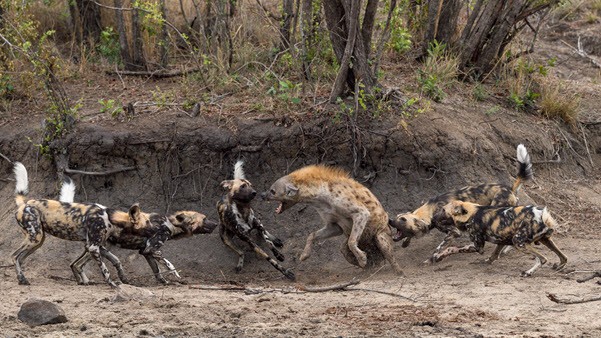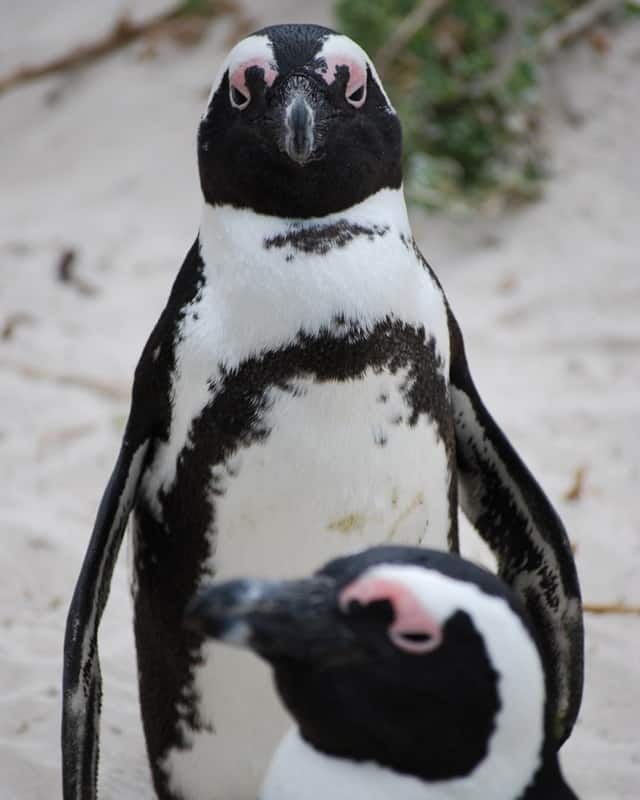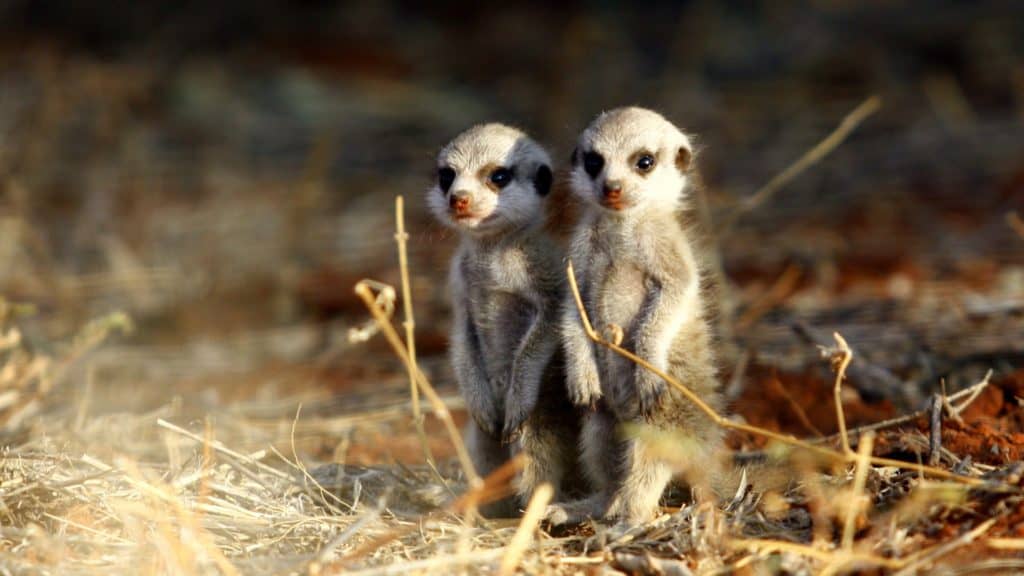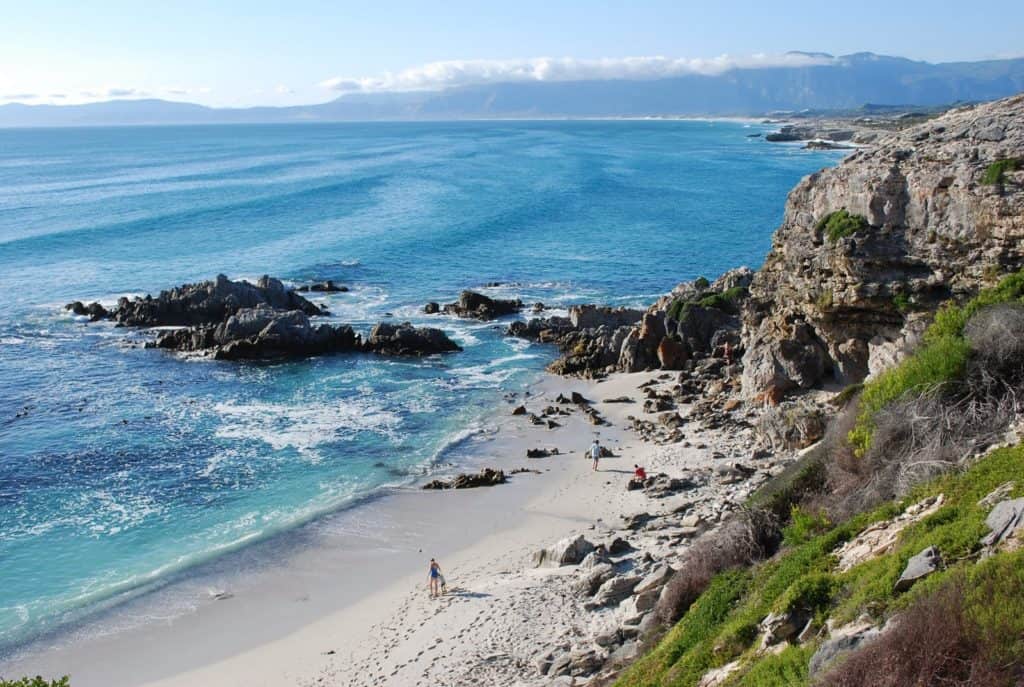South Africa
From Cape Town to Kruger:
Discover Africa's Melting Pot
South Africa has the moniker of “a world within a nation.” At nearly twice the size of Texas or France, it has a bit of everything with varying weather, landscapes, cultures, and wildlife. The country is home to beautiful beaches, incredible mountain ranges, cosmopolitan cities, wine country, diverse people and cultures, and of course great safari areas. At times it feels very much like the United States or Europe.
Cape Town is a cosmopolitan jewel surrounded by Dutch colonial towns and breathtaking coastlines. The Eastern Cape boasts Malaria-free game reserves and stunning scenery. Durban is the gateway to the white sand beaches and tropical waters of Kwazulu Natal. Kruger National Park, and its adjacent private reserves, remain one of the best places on the African continent to guarantee sightings of the Big Five. South Africa is an excellent location for individuals who wish to combine a safari with epicurean outings, active adventures, or multiple safari countries. It is a family-friendly destination and excellent for first-time safari go-ers.
Due to good infrastructure, South Africa is one of the best destinations for self-driving and also offers great flight connectivity to other destinations. Virtually anything you would want to do on a vacation is on offer in South Africa. Beyond safaris, South Africa offers great hiking and walking and water activities like boating, kayaking and whale watching.


South Africa Sample Safaris
Essential Diversity: River and Desert
This safari is designed for the safari connoisseur seeking rarity, exclusivity and luxury along with the full diversity of wildlife. The itinerary includes private guiding and vehicle at both safari camps, offering the ultimate in flexibility and maximizing the opportunities to see wildlife you want to see, while maintaining supreme comfort and luxury.
South African Splendor: Cape Town and Sabi Sands Safari
Southern Africa is an incredibly diverse region with varying weather, landscapes, cultures, and wildlife.
Top South Africa Safari Locations
South Africa Regions

Northern Cape
Overview
Tswalu is the largest private game reserve in South Africa and a real favorite of our repeat safari goers. This is part of the “green Kalahari”, with arid savannah and grasslands against a backdrop of ancient mountains. The big draw here is the diverse and unique animal viewing – pangolin, desert black rhino, springbok and gemsbok, aardvark, aardwolf, cheetah and meerkat are specialties – along with loads of activities on offer and a real emphasis on conservation. It is malaria-free.
The Kgalagadi Transfrontier Park is over 13,500 square miles in size, spanning across South Africa, Namibia and Botswana. It is a Kalahari desert area with rolling red dunes, and in many places the wildlife can be very good, even including predator sightings. TWS Founder Bill Given did lion research in this area. Kgalagadi is really suited to self-drivers, with mobile camping or stays in the accommodations run by South African Parks – a good choice for those wanting their own adventure.
Location
The Northern Cape is found in the northwest corner of South Africa, north of Cape Town and extending up to the Namibia and Botswana borders.
Wildlife
Rare species like brown hyena, aardvark and pangolin, plus cheetah, meerkat, giraffe and more at Tswalu; big cats, including black maned lion, and antelope in Kgalagadi.
Best Times to Go
Year-round; these desert areas are interesting in all seasons. Coldest temperatures are June through August, with virtually no rain; the warmer summer runs November through March, and this is also when the rains arrive, and everything is green and fresh.

West Coast
Overview
The West Coast is rugged and scenic, with some lovely wilderness areas and remote lodges. In the spring (mid-August to mid-September), the region blooms with wildflowers, Namaqualand being the most famous destination. This area is well-suited for self-drivers, who are interested in walking, hiking and enjoying the scenery and solitude rather than wildlife viewing.
Location
The west coast of South Africa, northwest of Cape Town.
Wildlife
The West Coast is not notable for its wildlife viewing, though a few antelope species and marine species like dolphins and seals can sometimes be seen. It is mostly visited for the scenery and biodiversity of flora.
Best Times to Go
August and September for the incredible wildflowers.

Cape Town
Overview
Cape Town is a world-class city with a spectacular location on the ocean and a backdrop of iconic Table Mountain. There are nearly endless sights to see and activities to participate in – exploring the city and its history; a visit to Robben Island, an island prison like Alcatraz where Nelson Mandela was imprisoned; township cultural tours; day trips to the stunning Cape Peninsula for coastal scenery and penguins; excellent restaurants; cage diving with great white sharks; unique shopping; and much more. We have relationships with the area’s best guides, favorite accommodations in a range of neighborhoods and price ranges, and can design a stay in Cape Town that is totally customized to your interests. Cape Town has easy flight connections with many popular destinations in Southern Africa, making it easy to combine with safaris in Botswana, Victoria Falls, Kruger National Park, and more.
Location
Cape Town is on the southwest coast of South Africa, near where the Atlantic and Indian Oceans meet.
Wildlife
Mainly a city destination, though marine species like sharks and seals can be seen outside of Cape Town, and baboons and antelope can sometimes be seen on the slopes of Table Mountain. The penguins on the beaches along the Cape Peninsula are a real traveler favorite.
Best Times to Go
Cape Town has a Mediterranean climate, with the warmest and driest weather during their summer, from November through March. July through September is winter and the coldest and wettest time in Cape Town and the winelands. The climate is mild and travelers visit the region year-round.

Winelands
Overview
The Cape Winelands are just outside of Cape Town, nestled in gorgeous valleys surrounded by mountains. The area is known for its fine vineyards, incredible restaurants and charming small towns like Stellenbosch, Franschhoek, and Paarl. The Winelands can be visited as a day trip from Cape Town, but they also make for a great destination for a relaxing longer stay. There are lovely options for accommodations in the towns, or on working wineries. For foodies and wine enthusiasts, spending a few days in the Winelands is sure to be a highlight of a visit to South Africa.
Location
The Cape Winelands are just 40 minutes or so east of Cape Town, near the southwest coast of South Africa.
Wildlife
This region is visited for its food and wine rather than wildlife.
Best Times to Go
Similar to Cape Town, the Winelands region has a mild Mediterranean climate, and travelers visit the region year-round. The warmest and driest weather occurs during their summer, from November through March. Grape harvest season is in February. July through September is winter, with cooler temperatures and more gray days.

Southern Cape
Overview
There are some wonderful hamlets on the Southern Coast, such as Hermanus, where you can find outstanding land-based viewing of the southern right whales. Boat trips can bring you very close to these curious whales that are known to stay at the surface and come very close to viewers. Great white shark trips (including shark cage dives!) are possible from this area too, though the shark sightings are less reliable now than in years past. Beyond whales and sharks, this area has good opportunities for walking and hiking, and enjoying scenic coastal settings. This region is of special interest to those interested in botany; the Cape Floral Kingdom is a biodiversity hotspot with thousands of unique species. This area can also be visited as a day trip from Cape Town, though 2 or more days are recommended to thoroughly enjoy everything the region has to offer.
Location
The Southern Cape is on the southwest coast of South Africa, southeast of Cape Town.
Wildlife
Whales are the big draw for the Southern Cape, which has some of the best land-based whale watching in the world. Other marine species like Great White sharks, seals, and pelagic birds are often seen too.
Best Times to Go
The best time for whales is June through August, and good viewing is still possible through October.

Garden Route
Overview
The Garden Route is a classic self-driving route in South Africa, a favorite extension for travelers coming from Cape Town. Along the way, there is incredible natural beauty, with beaches, National Parks, ancient forests, and small towns to discover. There are opportunities for hiking, biking, kayaking, boating, viewing marine wildlife, and much more. We would recommend a minimum of 3 or 4 nights to explore the region and can assist with planning an itinerary tailored to your interests.
Location
The Garden Route stretches from the Southern Cape and the Klein Karoo towards Port Elizabeth.
Wildlife
There is great birding in the National Parks along the Garden Route, and several species of whales and dolphins are often seen from the coast.There are some smaller wildlife reserves and sanctuaries in this region (for elephants, monkeys, and birds for example), but they don’t offer a real wilderness experience and we would recommend other safari destinations in South Africa for seeing these animals in their natural habitats.
Best Times to Go
Year-round. Seasons are opposite of North America and Europe, with cooler temperatures from June-September and the warmest season (and best ocean swimming) from November-March.

Eastern Cape
Overview
Beyond the Garden Route lies the Eastern Cape. While there are some safari lodges in the area, they are generally located in smaller reserves and the wildlife is not native, so we would recommend enjoying the recreation opportunities along the Garden Route and then continuing on for a wildlife safari elsewhere.
Location
The Eastern Cape and Wild Coast are found beyond the Garden Route, along the southern coast of South Africa.
Wildlife
Most of the Eastern Cape game reserves offer Big four with fewer opportunities to view leopard due to the ease of blending into the dense vegetation typical of this region. The reserves offer excellent elephant viewing opportunities and each reserve has its own assortment of managed species.
Best Times to Go
Year-round. Seasons are opposite of North America and Europe, with cooler temperatures from June-September and the warmest season (and best ocean swimming) from November-March.

Wild Coast
Overview
The Wild Coast is a remote region, far less visited than the Garden Route, with beautiful coastal scenery, hiking, surfing, and historic villages. This region is also well-suited for self-drivers and travelers interested in getting off the beaten path. Multiple-day hiking tours are available from this area as well.
Location
The Wild Coast is found beyond the Garden Route and Eastern Cape, along the southern coast of South Africa.
Wildlife
There is great birding in the National Parks along the Garden Route, and several species of whales and dolphins are often seen from the coast.There are some smaller wildlife reserves and sanctuaries in this region (for elephants, monkeys, and birds for example), but they don’t offer a real wilderness experience and we would recommend other safari destinations in South Africa for seeing these animals in their natural habitats.
Best Times to Go
Year-round. Seasons are opposite of North America and Europe, with cooler temperatures from June-September and the warmest season (and best ocean swimming) from November-March.

KwaZulu-Natal
Overview
The Phinda Private Game Reserve is another very interesting safari area, with seven distinct habitats including rare dry sand forest, woodlands, grasslands, and wetlands. It is home to the Big 5, unique flora, and huge numbers of birds, plus it is located near the Indian Ocean with opportunities for diving. Being a private reserve means that there are lots of activities, including some hands-on conservation projects with elephant, rhino and pangolin. There are a handful of luxurious lodges scattered across the Reserve, and flight connectivity is good from other destinations in South Africa. We would recommend it in combination with a safari in the Kruger region, for a diversity of wildlife, landscapes and activities.
iSimangaliso Wetland Park is a UNESCO World Heritage site, with massive Lake St. Lucia as the crown jewel. The park has varied terrain, with sand dunes, savannah and swamps; plus coastal shores with coral reefs and miles of beach. To the south of iSimangaliso is Hluhluwe-iMfolozi Park, once the royal hunting grounds of King Shaka. This region is a real favorite of birders, though the general wildlife viewing is not as prolific as other safari destinations in South Africa.
Durban is a melting pot of European, African and Indian influences, with beaches and excellent cuisine. We rarely include it in our itineraries, but it is a common stop for self-drivers.
Location
KwaZulu-Natal is in the southeastern portion of South Africa, extending along the coast to the Mozambique border.
Wildlife
Cheetah and rhino are commonly seen in Phinda, which is also home to the Big 5; diving in the region is good, with turtles, dolphins and tropical fish. Birding is notable in iSimangaliso.
Best Times to Go
The dry winter runs July-September and offers the best wildlife viewing; the hotter, wetter summers run November-March. This region is more humid and receives more rain than South Africa’s other safari destinations.

Johannesburg and Pretoria
Overview
Johannesburg is the largest city in South Africa and the second largest city in Africa. Known as the “City of Gold”, Johannesburg began as a tent camp in the 1800s when gold was discovered on a farm. Though many travelers simply stop through on their way to other destinations, there are great opportunities for exploring – touring the city’s dynamic art scene, diving into the country’s Apartheid past with visits to the excellent Apartheid museum and Soweto, or exploring The Cradle of Humankind, one of the best archaeological sites in the world. Farther north lies the capital of South Africa, Pretoria.
Location
Johannesburg is in northeastern South Africa, the world’s largest city that is not located on a river.
Wildlife
Mainly a city destination; there are some wildlife reserves near Johannesburg, but we generally do not recommend them and would suggest visiting one of the other safari areas in South Africa detailed in this section.
Best Times to Go
Year-round. Seasons are opposite of North America and Europe, with winter from June through August and summer (and the most rain) November through March. Johannesburg is at a higher elevation and the temperatures are pleasant for touring year-round.

The Waterberg
Overview
The Waterberg’s Marataba area is exceptionally beautiful, with dramatic mountain scenery and rolling hills. The main draw here is the excellent walking safaris, which can be as short as a couple of hours or as long as several days. The remote nature of the region means that there are very few other people, so it makes for a special exclusive experience. The wildlife viewing is not quite as strong as Madikwe, but it works very well in combination with Madikwe or even the Kruger area.
Location
The Waterberg is in north-central South Africa, along the border with Botswana.
Wildlife
Lion, elephant, and plains game are frequently seen. Madikwe and the Waterberg are home to the Big 5, though they are not as reliably seen as other South Africa reserves. There are some rare species here, like aardvark and brown hyena, that lucky travelers may spot.
Best Times to Go
Similar to other South Africa safari destinations, the dry winter runs June-September and offers the best wildlife viewing; the summer from November to March is hotter and rainier.

Madikwe Game Reserve
Overview
Located along the border of Botswana, Madikwe Game Reserve is one of our favorite destinations for those looking to travel to a malaria-free wildlife area. It is a 300 square mile private reserve made up of former farmland that has reverted to its natural state, with the Big 5 re-introduced and now flourishing along with lots of other mammals and birds. This is a good destination for families, with lovely options for exclusive use properties, and a variety of activities like walking and meeting the local people that will appeal to all ages.
Location
Madikwe and the Waterberg are in north-central South Africa, along the border with Botswana.
Wildlife
Lion, elephant, and plains game are frequently seen. Madikwe and the Waterberg are home to the Big 5, though they are not as reliably seen as other South Africa reserves. There are some rare species here, like aardvark and brown hyena, that lucky travelers may spot.
Best Times to Go
Similar to other South Africa safari destinations, the dry winter runs June-September and offers the best wildlife viewing; the summer from November to March is hotter and rainier.

Kruger and Surrounds
Overview
Kruger is a vast National Park loaded with amazing wildlife diversity and large quantities of animals. The best place for safari is in private reserves adjacent to the Kruger National Park, like the Sabi Sand Game Reserve. The private reserves offer an exclusive experience, with far fewer vehicles than the National Park, and the guides are allowed to drive off-road, allowing for up-close viewing of the animals, and after dark, for the opportunity to see some nocturnal species. The Kruger region is well known for its easy wildlife viewing, and travelers often see all of the Big 5 species in one day. The area feels a bit tamer than most other safari destinations, as the animals are extremely habituated to vehicles and are thus very easy to find and view. Still, these are wild animals, and because of the accessible viewing the dramatic animal behavior and interactions might actually be witnessed more often than other safari destinations. There are other interesting safari locations in South Africa, but this is by far the best option for wildlife viewing. Because of the ease of wildlife viewing, the Kruger area is a great choice for shorter safaris, and then it is easy to take in some of South Africa’s other attractions too.
The lodging in the Kruger area tends to be very upscale, with plush suites, and it is common for lodges to have internet connections, gyms, and spas to use between game drives – they are more like resorts than safari camps! This is not the vintage safari experience, but the greater Kruger area is probably the best location in Africa to see a lot of animals at close range and enjoy a luxurious experience.
Location
Kruger National Park is located in northeastern South Africa, extending north to the Zimbabwe border and east to the Mozambique border.
Wildlife
This is without a doubt the easiest place in all of Africa to see the Big 5 (lion, leopard, elephant, buffalo and rhino) on a safari. It is the premier location on the continent to see leopard, and offers reliable sightings of both black and white rhino. It is also possible to see wild dog, cheetah, hyena, several species of antelope, and much more.
Best Times to Go
Safaris in the Kruger area are excellent year-round, with the best wildlife viewing from July through September. This is winter in South Africa, with drier and colder weather in the Kruger region. The green season runs mid-November through March, and this is the warmest and wettest time to visit. April, May and June are a shoulder season with little rain and cooler temperatures. October and November can be hot and dry, but game drives are done in the early mornings and late afternoons, and many lodges in Kruger have air conditioning and pools to cool off in.

